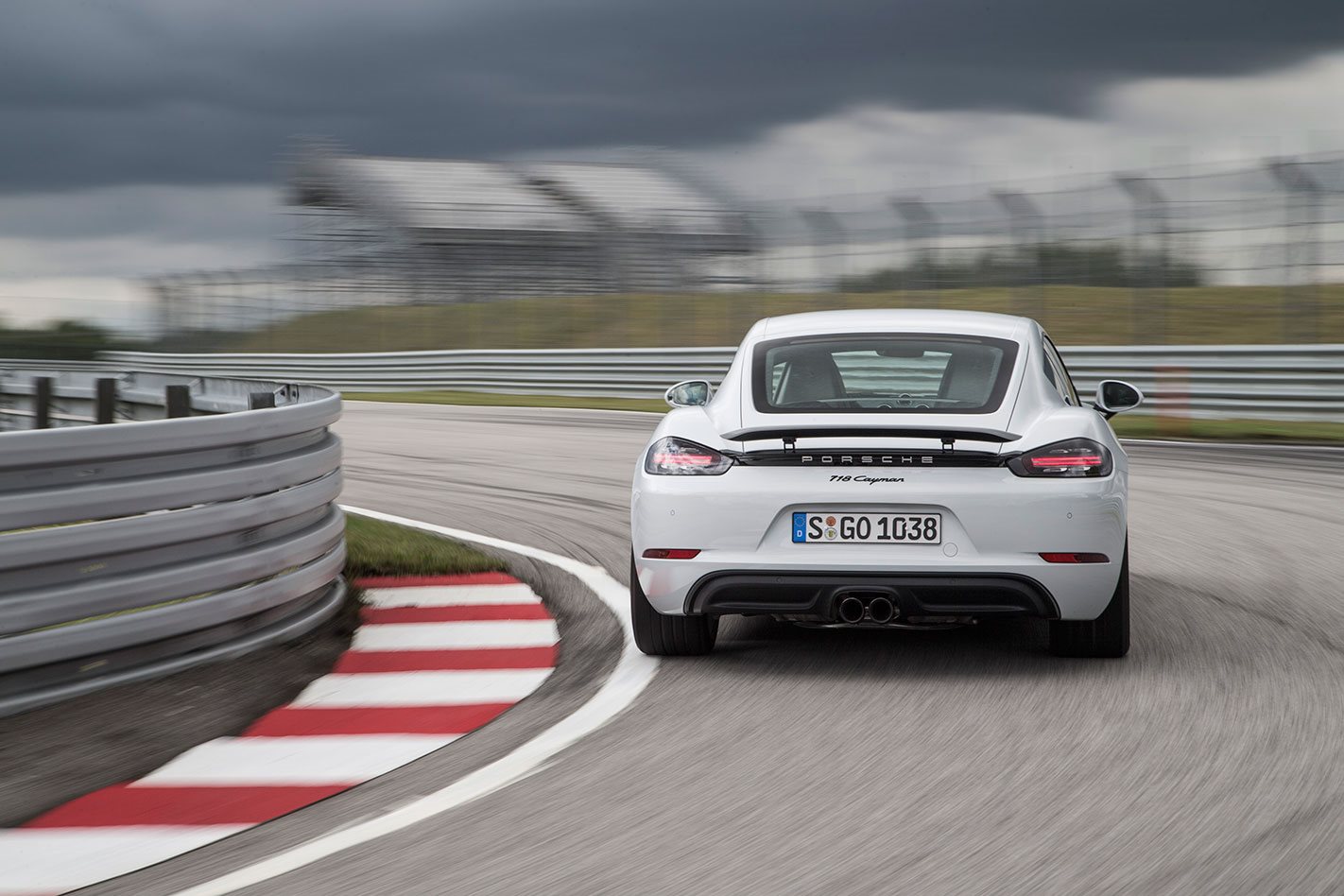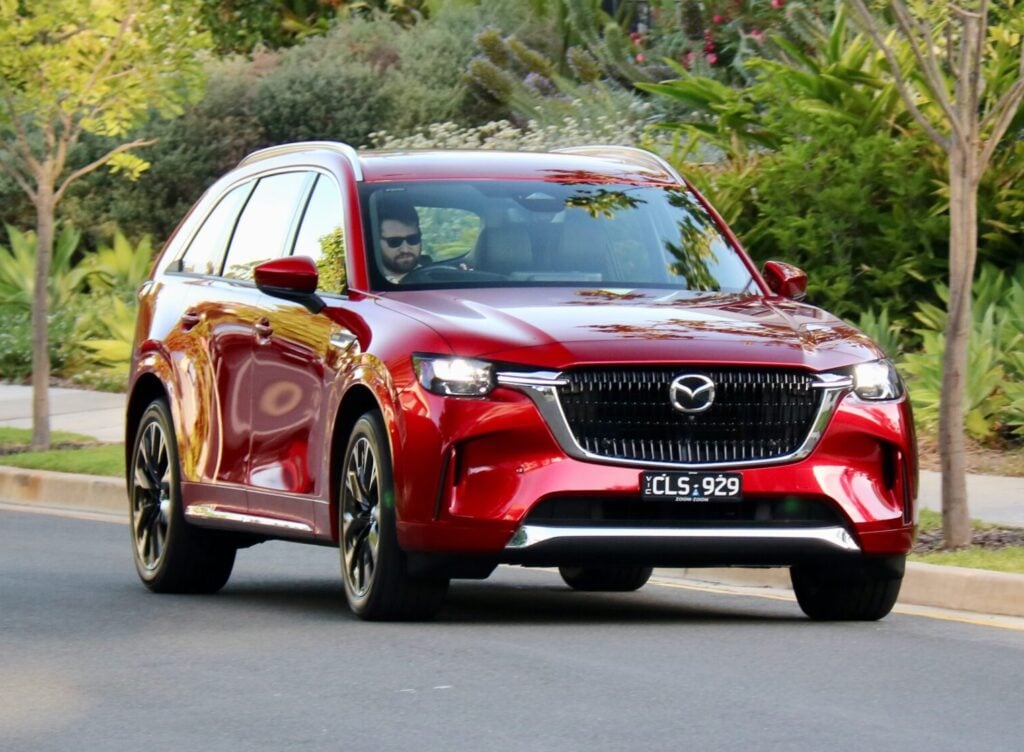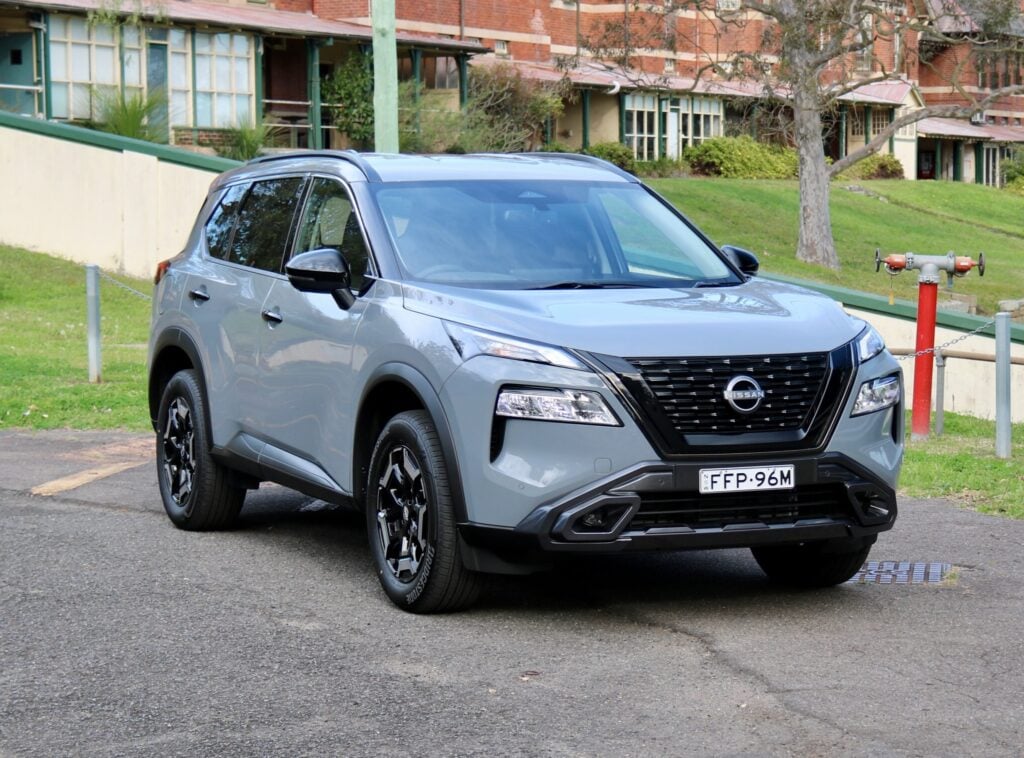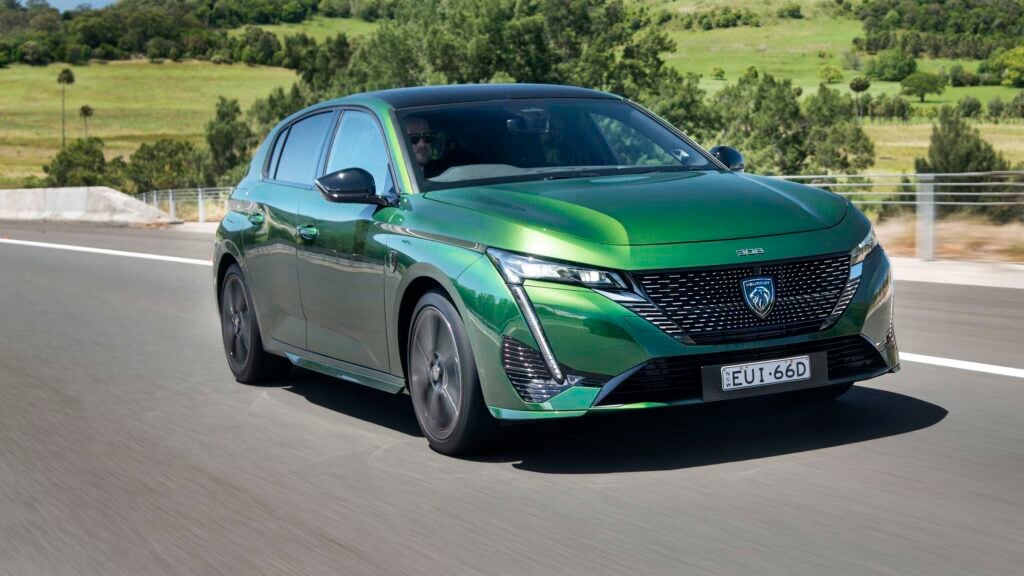THE Porsche Cayman, the poor man’s 911, gets a new role as the performance brand’s entry-level sports car via a flat-four heart transplant and a personality all of its own.
WHAT IS IT? The mid-life update for Porsche’s 981 Cayman, though this is far more than your average facelift. Almost every panel is new, the interior and suspension have been extensively altered, and mounted just behind the occupants’ heads sits an all-new, smaller capacity turbocharged flat four, replacing Porsche’s revered naturally aspirated flat six.
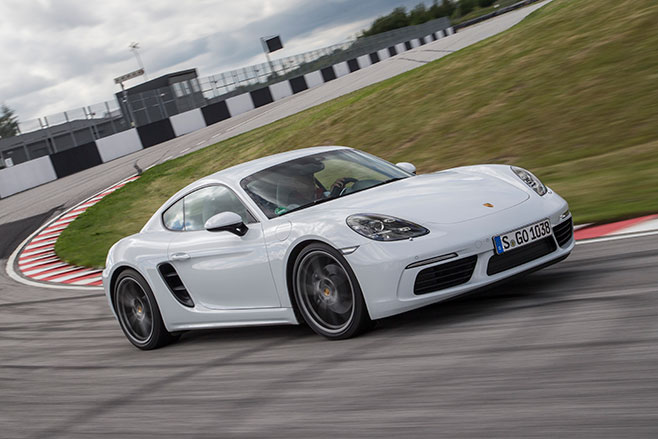
MAIN RIVALS The BMW M2 is staring the 718 Cayman directly in the face, and ditto the ballsy Audi TTS quattro, feral Alfa Romeo 4C, and Mercedes-AMG’s coupe-with-four-doors, the CLA45.
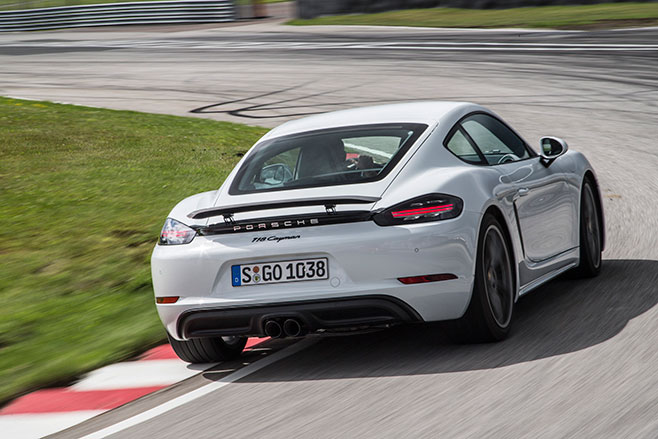
PLUS: Ballsy, bassy new flat-four gives Cayman a whole new personality; warmer, cleaner interior; more fluent dynamics. MINUS: Some turbo lag below 2000rpm; brilliant PDK makes it even harder to argue a case for the still-wonderful manual
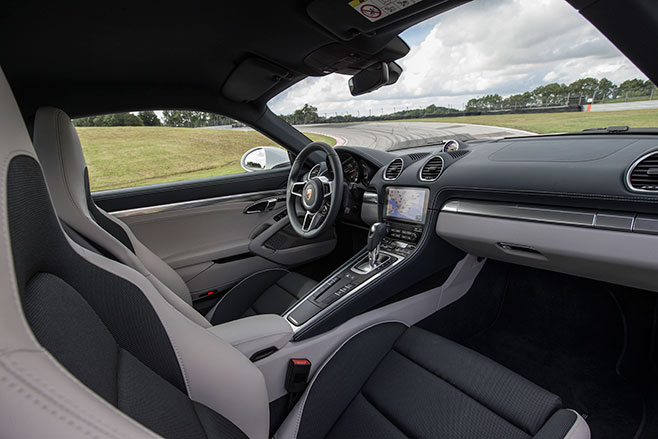
But not anymore. Its reinvention as Porsche’s entry-level sports car, controversially boasting all-new turbocharged flat-four engines, has effectively set the 718 Cayman free. It’s gone through a mid-life crisis and come out the other side looking fitter, feeling fresher, and proving it still knows how to have a rollicking good time, all while sounding completely unlike a 911.
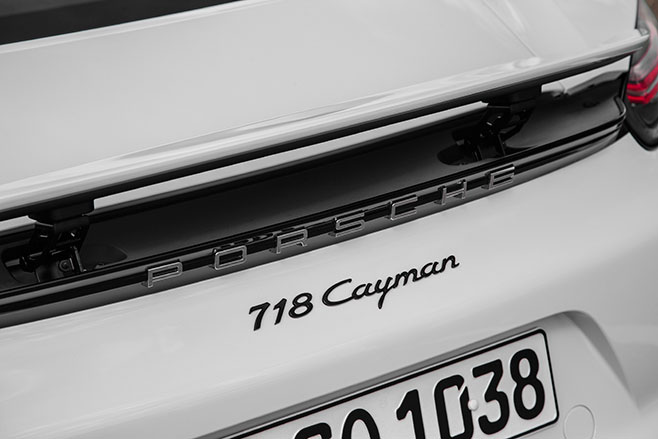
Offered in two capacities – a 1988cc version in the base 718 Cayman and a 2497cc version in the Cayman S – the new flat-four was developed simultaneously with Porsche’s all-new turbocharged flat-six that recently made its debut in the 911 Carrera. The base Cayman engine shares its bore and stroke with the 911’s 3.0-litre boosted flat-six, while the S gains its larger capacity via a fat 102mm bore. The larger donk also gets a touch of the exotic courtesy of a variable-vane turbocharger (or Variable Turbine Geometry – VTG – in Porsche-speak), just like the flagship 911 Turbo.
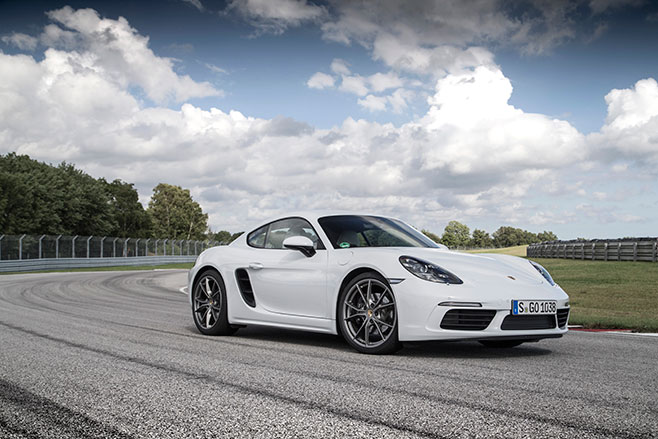
Tied to carry-over six-speed manual or seven-speed dual-clutch transmissions, the slowest Cayman you can buy (a stock 718 manual) now does 0-100km/h in a claimed 5.1sec. A sports chrono-equipped S PDK (with launch control) trims that to just 4.2sec. Don’t be fooled by its lesser cylinder count; the flat-four Cayman is a bolter.
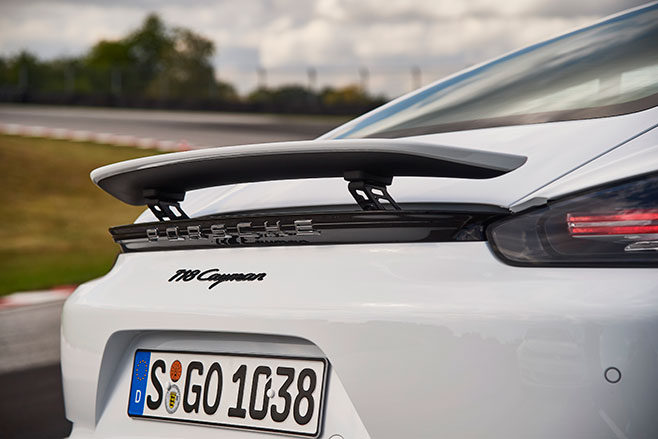
Not that the base Cayman really needs improvement. With a 10-percent more direct steering rack (from the 911 Turbo), higher spring and anti-roll-bar rates, additional rebound buffer springs in the front axle, a stiffer rear axle and half-inch wider rear wheels, Porsche claims the 718 offers reduced front axle lift, less roll, improved rebound control, increased lateral grip and significantly higher cornering stability. What that means in plain English is an almost supernatural ability to deal with the greater demands of so much extra low-end torque when putting power down, and sweeter dynamic behaviour in all conditions.
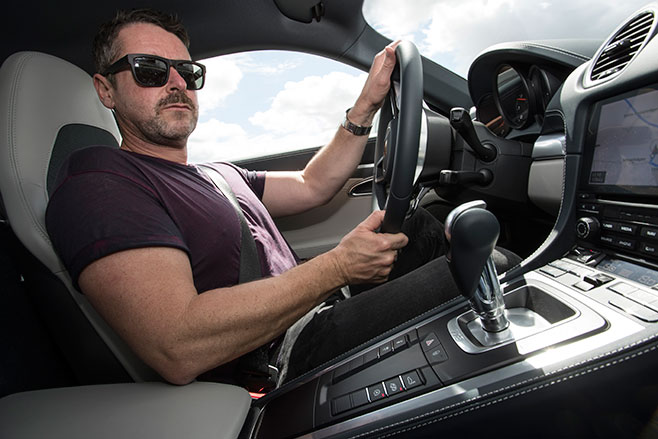
And the ride. While tyre noise remains ever-present on coarse surfaces, the base PASM-equipped 718 Cayman on 20-inch wheels is yet another example of Porsche’s ability to combine sports car body control with liveable absorbency.
But it’s the all-new engine that steals the show. With the steering wheel’s drive-mode dial set to “Sport” and the exhaust button engaged, the Cayman PDK manages to choose exactly the right gear for any given situation, and backs that up with a ballsy, bassy, throbby backing track that sounds slightly manufactured on first acquaintance, but really grows on you the more time you spend with it.
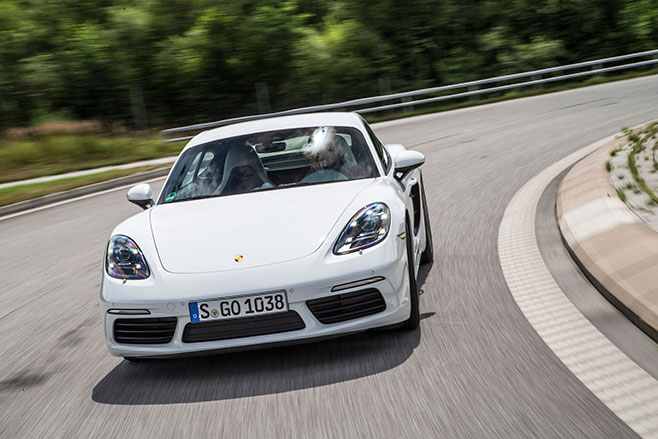
Thinking no union could surpass the 2.0-litre dual-clutch’s driveability excellence, the 2.5-litre manual adds another level of naughtiness. Sport modes primed, the manual’s exhaust crackles every time you lift off the throttle, and when provoked on overrun, it’s bliss on a stick. It doesn’t sound anything like the old flat-six but only died-in-the-wool purists would ever shit-can the flat-four Cayman’s character. About our only criticism is some turbo lag below 2000rpm – it only really starts hauling once there’s a “two” on the tacho – which becomes even more obvious in the manual if sport chrono isn’t in either Sport or Sport+.

While the 718’s four-pot provenance is undoubtedly the main deal, the rest of the car has undergone many changes to facilitate its seamless application, including all the plumbing associated with a keeping a mid-mounted turbo engine cool. Only the 718’s roof, windscreen and luggage tailgate carry over from the previous six-cylinder 981, and there’s been a considerable lift in interior lushness, thanks to the 911’s new multimedia set-up and the 918’s fabulous steering wheel. Finally, the Cayman’s cabin matches its sticker price.
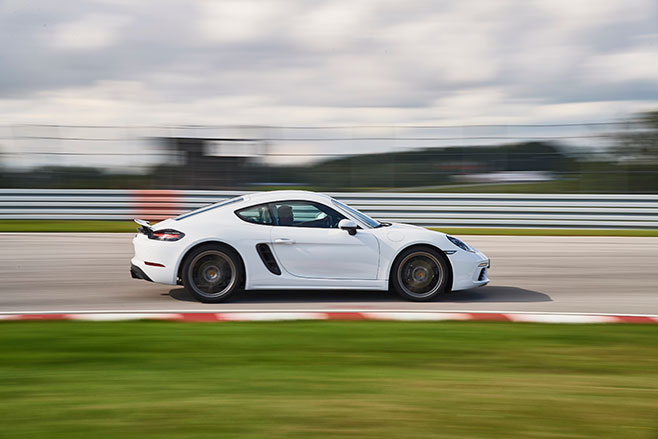
Stepping out from the 911’s shadow was never going to be easy. Others might argue but I think the 718 Cayman is all the better for it.
SPECS Model: Porsche 718 Cayman Engine: 1988cc flat 4, dohc, 16v, turbo Max power: 220kW @ 6500rpm Max torque: 380Nm @ 1950-4500rpm Transmission: 7-speed dual-clutch Weight: 1365kg 0-100km/h: 4.7sec (claimed) Economy: 6.9L/100km (EU) Price: $111,572 On sale: November


